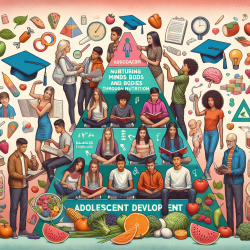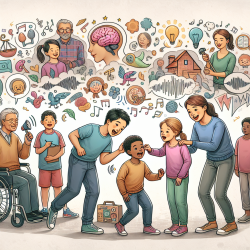The journey of adolescence is marked by rapid growth and development, both physically and cognitively. As educators and health practitioners, understanding the critical role nutrition plays in this stage is essential. Recent research conducted in Uttar Pradesh and Bihar, India, sheds light on how iron supplementation and dietary diversity can significantly impact the nutritional status and learning outcomes of adolescents.
The Study: Key Findings
The longitudinal study titled "Association of iron supplementation and dietary diversity with nutritional status and learning outcomes among adolescents: Results from a longitudinal study in Uttar Pradesh and Bihar, India" explores the associations between nutritional interventions and educational achievements among adolescents.
- Iron Supplementation: The study found that iron and folic acid (IFA) supplementation was positively associated with improved reading and math proficiency. Adolescents who received IFA tablets were less likely to drop out of school.
- Dietary Diversity: A diverse diet was linked to better hemoglobin levels, height-for-age scores, and math proficiency. It also reduced the risk of school dropout.
- Gender Differences: Girls showed higher benefits in hemoglobin levels from IFA supplementation compared to boys. However, boys benefited more in terms of height-for-age scores.
Implementing Research Findings: Practical Steps for Practitioners
For practitioners looking to enhance their skills and improve student outcomes through nutritional interventions, consider the following steps:
- Promote Iron Supplementation: Encourage schools to implement or strengthen IFA supplementation programs. Educate students on the benefits of iron for cognitive function and overall health.
- Enhance Dietary Diversity: Work with school meal programs to ensure a variety of foods are offered. Educate families on the importance of a balanced diet rich in fruits, vegetables, proteins, and grains.
- Address Gender-Specific Needs: Tailor nutritional programs to address the specific needs of girls and boys. For instance, focus on increasing iron intake for girls who are at higher risk of anemia.
- Collaborate with Health Professionals: Partner with local health authorities to provide regular health check-ups and nutritional counseling for students.
The Way Forward: Encouraging Further Research
The findings from this study highlight the need for continued research into the relationship between nutrition and educational outcomes. Practitioners are encouraged to explore further studies that can provide deeper insights into effective interventions tailored to different populations.
Nutritional interventions hold immense potential for transforming the lives of adolescents. By implementing these strategies, educators and health professionals can contribute significantly to the holistic development of young individuals.
To read the original research paper, please follow this link: Association of iron supplementation and dietary diversity with nutritional status and learning outcomes among adolescents: Results from a longitudinal study in Uttar Pradesh and Bihar, India.










